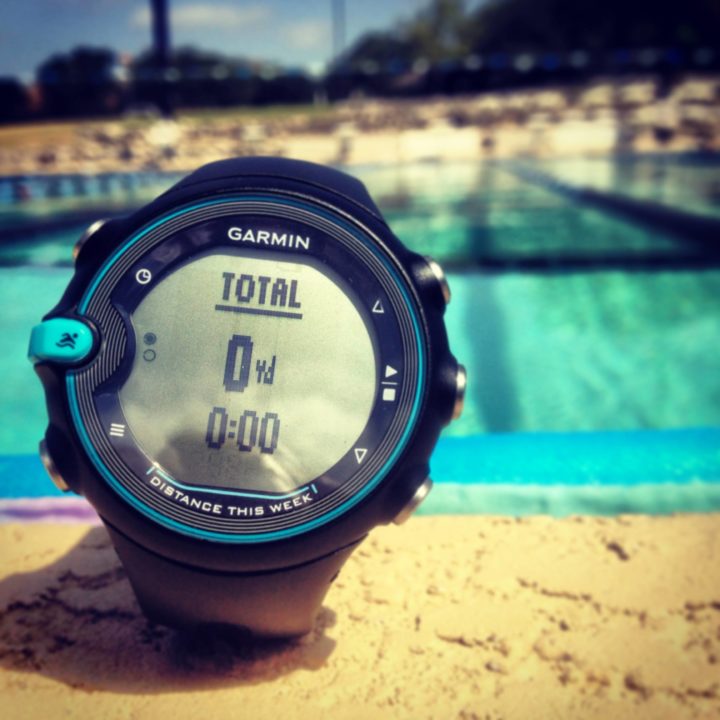My old friend and swimswam partner, Keith Haden, president of All American Swim Supply, sent me this unit to test out.
Keith and I are about the same age. He swam at Eastern Kentucky University a few years before I swam at the University of Tennessee. Back then the only technology we used was a pace clock. The internet didn’t exist and cellphones were the size of a fat briefcase. I told Keith I didn’t trust technology in the pool, that it was too complicated and cumbersome. Keith assured me the Garmin Swim Watch would change my opinion on the topic. “Mel,” he said, “I’ve used it, and I’m hooked. If I can, you can. Trust me.”
Unboxed, I found three items; the Garmin Swim Watch, the manual, and the USB stick.
I have to be honest, and maybe you are like me, but I rarely read a manual. I did for the Garmin Swim Watch, and it was helpful. Typically, I don’t trust manuals. They never match actual use. Garmin’s manual did. However, my opinion is that you should be able to strap-on a unit and jump right in the pool. Technology should be intuitive, and the Garmin Swim Watch delivered, but I’ll explain that later.
Here’s the unit on closer inspection:
Here’s an upclose look at the back, at the flexible plastic band:
At the pool, I was a little nervous, fearful I’d screw the unit up and make it useless. Those fears went away when I walked on deck, strapped it on, and started pressing buttons. As soon as I did, it asked me to set the time and my weight. (Sadly, it took awhile to crank it up to 198 pounds. My race weight is 188…but I’m working on that.) I finally pressed the universal BLUE button (with the icon of the swimmer on it), and it asked me to set the pool length. The pool was setup for 25 yards, so I set it accordingly.
I don’t wear a watch or any jewelry, except for my wedding ring, but the flexible pastic band was comfortable with a snug fit.
On the image above, see the play/stop icon across from the BLUE button (with the swimmer icon). All you have to do is press it to being “recording” your workout.
The unit is smart. It records all laps, times/splits, and it uses a motion sensor to determine your strokes. I do a lot of active rest butterfly, 75 yards easy free, 25 blast butterfly, and the Garmin Swim Watch recorded it all. At the end of a set, just press the button on the bottom right, and Garmin will pause. If you’ve finished you workout, hit the play/stop button, and the Garmin screen display will give you three options; resume, save or delete. If you’re workout is done, save it and wirelessly upload the data to your computer.
For someone like myself who is fearful of using technology in practices, using the Garmin Swim Watch was about as easy as working my iPhone. In fact, I can’t wait to use it more as it has many more functions (logs drills, wireless workout data upload, review/share workouts). If you’re interested in a unit like the Garmin Swim Watch, it retails for $149.95.
HERE’S A QUICK VIDEO OF MY PRACTICE WITH THE GARMIN SWIM WATCH:
Host Gold Medal Mel Stewart is a 3-time Olympic medalist from the 1992 Olympic Games in Barcelona, Spain. He is also the co-founder of SwimSwam. Keith Haden is a former NCAA swimmer and now the president of All American Swim Supply.








Mel breathing to the front?